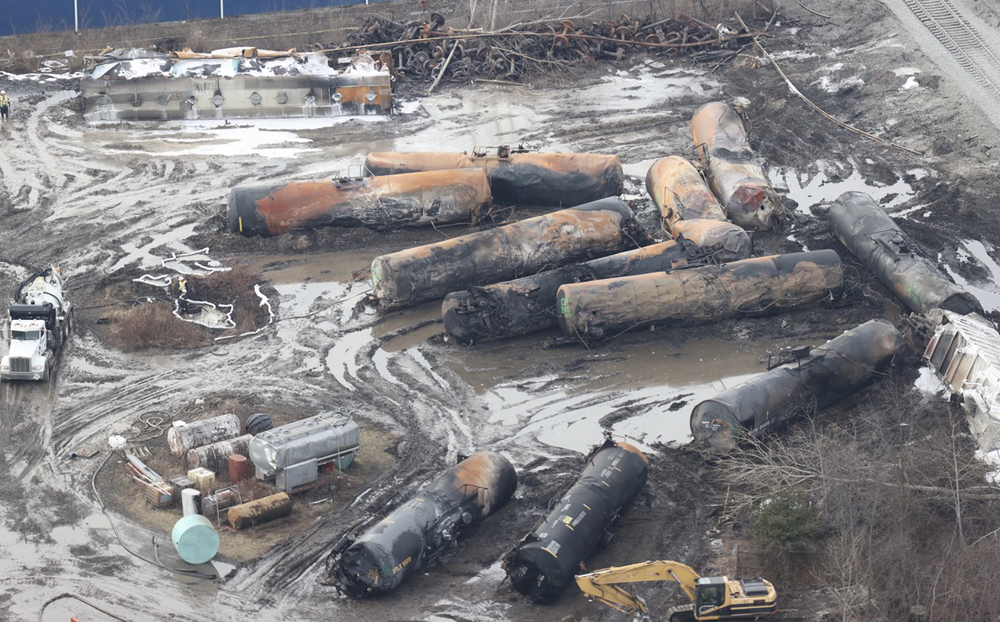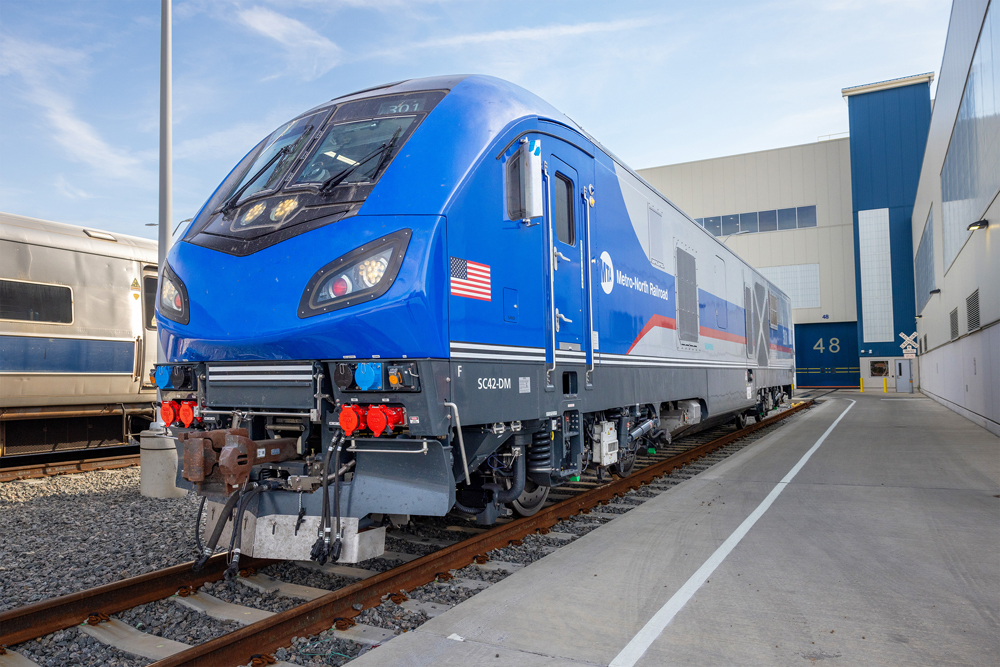
WASHINGTON — The National Transportation Safety Board has updated its preliminary information on the Feb. 3 Norfolk Southern derailment and fire in East Palestine, Ohio, revising the count of cars that derailed to 38 and providing a link to an Environmental Protection Agency list of what those cars were carrying.
In all, the train included 20 cars of hazardous materials, 11 of which derailed.
The NTSB says it has identified and examined the railcar that initiated the derailment. The wheel bearing suspected of overheating — based on video evidence — has been collected for metallurgical examination, as has the complete wheelset. The tank cars involved in the accident will undergo complete examination once decontamination is complete.
The board expects to publish a preliminary report on the accident in two weeks.














Defect detectors are generally every 20 miles give or take, when one gets a defect message either by a detector or in the case of the railroad I work for by a detector desk or both to inspect you must stop to inspect immediately consistent with good train handling or in certain instances you are able to travel the length of your train to avoid such things as bridges or places that you couldn’t inspect easily. I tell you though when bearings go they go quick and I mean quick. Sometimes you get a defect from a detector and the one just 20 miles behind had nothing, stop, inspect and you’ve got a hot one about to come apart. It’s happened to me over the years a couple of times. I have a carman friend and he has told me once they get bad it only takes a few miles and they’re melted. I haven’t kept up with this particular derailment but is it me or are there way more serious derailments the last few years than there used to be? I sure have seen and heard or read about way more than usual. Used to be at least to this rail a couple bad ones a year and that was it, but now it’s like a couple bad ones every few months. I wonder what’s going on? ( sarcasm)
For those who seriously follow railroad operations, the most important source of up dated information in understanding the wreck and the industry changing results is the LINK in this posting to the preliminary “updated” NTSB report. Read the list of the railcars involved, what they were carrying, and what worked and did not work to judge the fury of mass media which has belatedly become the Headline news, and the overload of misinformation and accusations.
Hey folks, hate to have to break this to you: rail safety is making news in the mass media.
In the recent past it didn’t matter if union T+E crews said the system isn’t safe. Or if railfans posting on this site said the system isn’t safe. Didn’t matter because wider audiences were tuned out, and government agencies didn’t care. Well, the cat’s out of the bag. Railroads cutting corners on safety was okay last month. This month, not so much.
Al, all bearings, sealed or otherwise, will eventually go bad. Unless a crew is alerted that there is a dangerous situation they will wait until the entire train has cleared the detector to stop. This part of the line is NOT flat and has many curves. So one has to be careful of their train handling. The biggest question will surround the detectors. A bearing that catches fire should have been heating up long before. Previous detectors should have caught a trend of that bearing heating up.
How do roller-bearing wheelsets overheat? And if the detector was activated, as the preliminary report stated, why wasn’t the train stopped immediately?
First off, that was my initial reaction, but since hot boxes are still a thing, obviously there’s a way that roller-bearings overheat. As for the second, it depends on which defect detector alerted the train crew, and I don’t believe that results in an emergency stop just a regular stop, that is if the detector even alerted the crew, something else the NTSB has already said they’re going to look into.
How can a train crew get a defect detector warning if the issue is 2 miles behind them on a PSR consist?